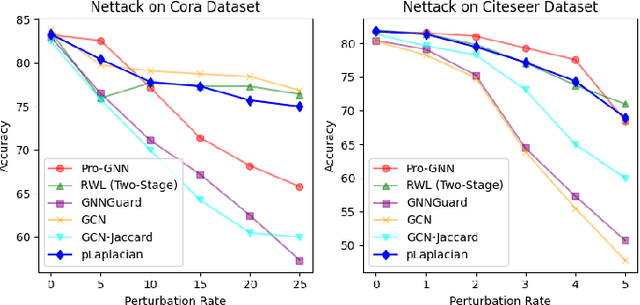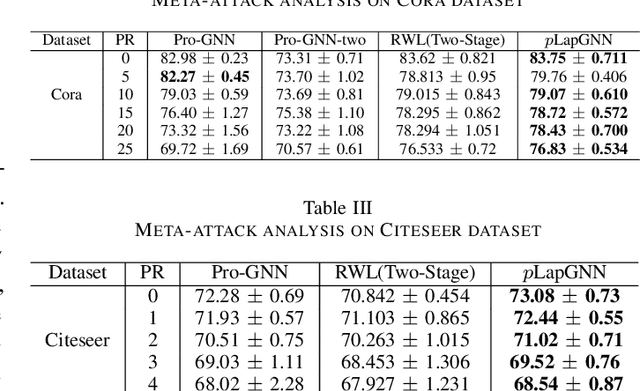Sandeep Kumar
Indian Institute of Technology, Delhi
Quantum Fourier Transform Based Denoising: Unitary Filtering for Enhanced Speech Clarity
Sep 05, 2025Abstract:This paper introduces a quantum-inspired denoising framework that integrates the Quantum Fourier Transform (QFT) into classical audio enhancement pipelines. Unlike conventional Fast Fourier Transform (FFT) based methods, QFT provides a unitary transformation with global phase coherence and energy preservation, enabling improved discrimination between speech and noise. The proposed approach replaces FFT in Wiener and spectral subtraction filters with a QFT operator, ensuring consistent hyperparameter settings for fair comparison. Experiments on clean speech, synthetic tones, and noisy mixtures across diverse signal to noise ratio (SNR) conditions, demonstrate statistically significant gains in SNR, with up to 15 dB improvement and reduced artifact generation. Results confirm that QFT based denoising offers robustness under low SNR and nonstationary noise scenarios without additional computational overhead, highlighting its potential as a scalable pathway toward quantum-enhanced speech processing.
Histogram Driven Amplitude Embedding for Qubit Efficient Quantum Image Compression
Sep 05, 2025Abstract:This work introduces a compact and hardware efficient method for compressing color images using near term quantum devices. The approach segments the image into fixed size blocks called bixels, and computes the total intensity within each block. A global histogram with B bins is then constructed from these block intensities, and the normalized square roots of the bin counts are encoded as amplitudes into an n qubit quantum state. Amplitude embedding is performed using PennyLane and executed on real IBM Quantum hardware. The resulting state is measured to reconstruct the histogram, enabling approximate recovery of block intensities and full image reassembly. The method maintains a constant qubit requirement based solely on the number of histogram bins, independent of the resolution of the image. By adjusting B, users can control the trade off between fidelity and resource usage. Empirical results demonstrate high quality reconstructions using as few as 5 to 7 qubits, significantly outperforming conventional pixel level encodings in terms of qubit efficiency and validating the practical application of the method for current NISQ era quantum systems.
A Hybrid Ensemble Learning Framework for Image-Based Solar Panel Classification
Jul 02, 2025Abstract:The installation of solar energy systems is on the rise, and therefore, appropriate maintenance techniques are required to be used in order to maintain maximum performance levels. One of the major challenges is the automated discrimination between clean and dirty solar panels. This paper presents a novel Dual Ensemble Neural Network (DENN) to classify solar panels using image-based features. The suggested approach utilizes the advantages offered by various ensemble models by integrating them into a dual framework, aimed at improving both classification accuracy and robustness. The DENN model is evaluated in comparison to current ensemble methods, showcasing its superior performance across a range of assessment metrics. The proposed approach performs the best compared to other methods and reaches state-of-the-art accuracy on experimental results for the Deep Solar Eye dataset, effectively serving predictive maintenance purposes in solar energy systems. It reveals the potential of hybrid ensemble learning techniques to further advance the prospects of automated solar panel inspections as a scalable solution to real-world challenges.
GraphFLEx: Structure Learning Framework for Large Expanding Graphs
May 18, 2025Abstract:Graph structure learning is a core problem in graph-based machine learning, essential for uncovering latent relationships and ensuring model interpretability. However, most existing approaches are ill-suited for large-scale and dynamically evolving graphs, as they often require complete re-learning of the structure upon the arrival of new nodes and incur substantial computational and memory costs. In this work, we propose GraphFLEx: a unified and scalable framework for Graph Structure Learning in Large and Expanding Graphs. GraphFLEx mitigates the scalability bottlenecks by restricting edge formation to structurally relevant subsets of nodes identified through a combination of clustering and coarsening techniques. This dramatically reduces the search space and enables efficient, incremental graph updates. The framework supports 48 flexible configurations by integrating diverse choices of learning paradigms, coarsening strategies, and clustering methods, making it adaptable to a wide range of graph settings and learning objectives. Extensive experiments across 26 diverse datasets and Graph Neural Network architectures demonstrate that GraphFLEx achieves state-of-the-art performance with significantly improved scalability.
Quantum-Enhanced Hybrid Reinforcement Learning Framework for Dynamic Path Planning in Autonomous Systems
Apr 29, 2025



Abstract:In this paper, a novel quantum classical hybrid framework is proposed that synergizes quantum with Classical Reinforcement Learning. By leveraging the inherent parallelism of quantum computing, the proposed approach generates robust Q tables and specialized turn cost estimations, which are then integrated with a classical Reinforcement Learning pipeline. The Classical Quantum fusion results in rapid convergence of training, reducing the training time significantly and improved adaptability in scenarios featuring static, dynamic, and moving obstacles. Simulator based evaluations demonstrate significant enhancements in path efficiency, trajectory smoothness, and mission success rates, underscoring the potential of framework for real time, autonomous navigation in complex and unpredictable environments. Furthermore, the proposed framework was tested beyond simulations on practical scenarios, including real world map data such as the IIT Delhi campus, reinforcing its potential for real time, autonomous navigation in complex and unpredictable environments.
GOTHAM: Graph Class Incremental Learning Framework under Weak Supervision
Apr 07, 2025Abstract:Graphs are growing rapidly, along with the number of distinct label categories associated with them. Applications like e-commerce, healthcare, recommendation systems, and various social media platforms are rapidly moving towards graph representation of data due to their ability to capture both structural and attribute information. One crucial task in graph analysis is node classification, where unlabeled nodes are categorized into predefined classes. In practice, novel classes appear incrementally sometimes with just a few labels (seen classes) or even without any labels (unseen classes), either because they are new or haven't been explored much. Traditional methods assume abundant labeled data for training, which isn't always feasible. We investigate a broader objective: \emph{Graph Class Incremental Learning under Weak Supervision (GCL)}, addressing this challenge by meta-training on base classes with limited labeled instances. During the incremental streams, novel classes can have few-shot or zero-shot representation. Our proposed framework GOTHAM efficiently accommodates these unlabeled nodes by finding the closest prototype representation, serving as class representatives in the attribute space. For Text-Attributed Graphs (TAGs), our framework additionally incorporates semantic information to enhance the representation. By employing teacher-student knowledge distillation to mitigate forgetting, GOTHAM achieves promising results across various tasks. Experiments on datasets such as Cora-ML, Amazon, and OBGN-Arxiv showcase the effectiveness of our approach in handling evolving graph data under limited supervision. The repository is available here: \href{https://github.com/adityashahane10/GOTHAM--Graph-based-Class-Incremental-Learning-Framework-under-Weak-Supervision}{\small \textcolor{blue}{Code}}
A Comprehensive Insights into Drones: History, Classification, Architecture, Navigation, Applications, Challenges, and Future Trends
Jan 17, 2025



Abstract:Unmanned Aerial Vehicles (UAVs), commonly known as Drones, are one of 21st century most transformative technologies. Emerging first for military use, advancements in materials, electronics, and software have catapulted drones into multipurpose tools for a wide range of industries. In this paper, we have covered the history, taxonomy, architecture, navigation systems and branched activities for the same. It explores important future trends like autonomous navigation, AI integration, and obstacle avoidance systems, emphasizing how they contribute to improving the efficiency and versatility of drones. It also looks at the major challenges like technical, environmental, economic, regulatory and ethical, that limit the actual take-up of drones, as well as trends that are likely to mitigate these obstacles in the future. This work offers a structured synthesis of existing studies and perspectives that enable insights about how drones will transform agriculture, logistics, healthcare, disaster management, and other areas, while also identifying new opportunities for innovation and development.
Transforming Blood Cell Detection and Classification with Advanced Deep Learning Models: A Comparative Study
Oct 21, 2024



Abstract:Efficient detection and classification of blood cells are vital for accurate diagnosis and effective treatment of blood disorders. This study utilizes a YOLOv10 model trained on Roboflow data with images resized to 640x640 pixels across varying epochs. The results show that increased training epochs significantly enhance accuracy, precision, and recall, particularly in real-time blood cell detection & classification. The YOLOv10 model outperforms MobileNetV2, ShuffleNetV2, and DarkNet in real-time performance, though MobileNetV2 and ShuffleNetV2 are more computationally efficient, and DarkNet excels in feature extraction for blood cell classification. This research highlights the potential of integrating deep learning models like YOLOv10, MobileNetV2, ShuffleNetV2, and DarkNet into clinical workflows, promising improvements in diagnostic accuracy and efficiency. Additionally, a new, well-annotated blood cell dataset was created and will be open-sourced to support further advancements in automatic blood cell detection and classification. The findings demonstrate the transformative impact of these models in revolutionizing medical diagnostics and enhancing blood disorder management
'Quis custodiet ipsos custodes?' Who will watch the watchmen? On Detecting AI-generated peer-reviews
Oct 13, 2024



Abstract:The integrity of the peer-review process is vital for maintaining scientific rigor and trust within the academic community. With the steady increase in the usage of large language models (LLMs) like ChatGPT in academic writing, there is a growing concern that AI-generated texts could compromise scientific publishing, including peer-reviews. Previous works have focused on generic AI-generated text detection or have presented an approach for estimating the fraction of peer-reviews that can be AI-generated. Our focus here is to solve a real-world problem by assisting the editor or chair in determining whether a review is written by ChatGPT or not. To address this, we introduce the Term Frequency (TF) model, which posits that AI often repeats tokens, and the Review Regeneration (RR) model, which is based on the idea that ChatGPT generates similar outputs upon re-prompting. We stress test these detectors against token attack and paraphrasing. Finally, we propose an effective defensive strategy to reduce the effect of paraphrasing on our models. Our findings suggest both our proposed methods perform better than the other AI text detectors. Our RR model is more robust, although our TF model performs better than the RR model without any attacks. We make our code, dataset, and model public.
Enhancing Robustness of Graph Neural Networks through p-Laplacian
Sep 27, 2024



Abstract:With the increase of data in day-to-day life, businesses and different stakeholders need to analyze the data for better predictions. Traditionally, relational data has been a source of various insights, but with the increase in computational power and the need to understand deeper relationships between entities, the need to design new techniques has arisen. For this graph data analysis has become an extraordinary tool for understanding the data, which reveals more realistic and flexible modelling of complex relationships. Recently, Graph Neural Networks (GNNs) have shown great promise in various applications, such as social network analysis, recommendation systems, drug discovery, and more. However, many adversarial attacks can happen over the data, whether during training (poisoning attack) or during testing (evasion attack), which can adversely manipulate the desired outcome from the GNN model. Therefore, it is crucial to make the GNNs robust to such attacks. The existing robustness methods are computationally demanding and perform poorly when the intensity of attack increases. This paper presents a computationally efficient framework, namely, pLapGNN, based on weighted p-Laplacian for making GNNs robust. Empirical evaluation on real datasets establishes the efficacy and efficiency of the proposed method.
 Add to Chrome
Add to Chrome Add to Firefox
Add to Firefox Add to Edge
Add to Edge